Free Solar Design Tool
Related articles:
How much does solar cost?
Use the simple Solar Calculator to get an instant price estimate for solar and batteries.
It is important to note that you do not want to pay too much or too little for a solar system. It might sound strange that you would not want to pay too little, but think about it as if you were going out to dinner. If you pay a small price, you might get a reasonably tasty meal, but it probably won’t leave you feeling particularly spritely afterwards. It is the same with solar in that if you buy a cheap system, you are far more likely to have a headache later on. In order to install cheap systems, the company will need to cut corners somewhere. Either on the components that are being installed or on installation costs.
With solar, as with eating out, there is a pricing sweet spot. Our Solar Calculator is not perfect (see the disclaimer before using it), but you can use it to get a rough idea of what you should pay. This is another reason why we recommend getting multiple quotes when buying solar, so you have a reference point.
Is solar a good investment?
Use our Solar Calculator to get instant solar savings and payback estimates. Whether solar makes financial sense largely depends on where you live. Your location will dictate how much solar you can produce and the relative cost of solar energy vs buying energy from the grid (factors that dictate your return on investment). There are very detailed answers and many variables for these different factors. This guide will give an overview of the average payback period for solar in some key regions. You can always use our Solar Calculator for more detailed analysis.
Australia has the best payback periods worldwide due to the high solar irradiance, good government support, and relatively expensive conventional electricity. The average payback period for a 5kW solar system in Australia, if you use 50% of the solar you produce, is around four years (in 2018), according to the consumer advocacy group Choice, that varies from as little as 2 to 3 years in Adelaide up to 5 or 6 years in Melbourne, Hobart, and Darwin.
In the US, the average payback on a residential solar system is typically 6 to 8 years, according to the solar quote comparison website EnergySage. Interestingly, according to the Indian Solar market, the payback period for residential systems in India is also approximately 6 to 8 years.
Battery Storage Payback & ROI Calculator
Are batteries a good investment?
Use our Solar Calculator to get instant battery storage cost and payback estimates.
Similar to the desire for us to provide a safe and comfortable home for our family, many humans also seem to have an innate, evolutionary desire to have full control of our energy needs. However, this desire is usually at odds with both the financial and environmental reasons for going solar. To be entirely energy independent, you need to be completely off-grid, which means you’ll need an awful lot of solar, batteries and a backup generator to keep you going in the depths of winter. However, if you live or are moving to an area without the grid, you have little choice but to be energy-independent.
How many solar panels should I get?
There are a surprising number of factors to consider when deciding on what size solar system to get. It is worth looking at all of these factors if you are on a budget and have the time. The short answer to this question is that most households now get as much solar as they can fit on their roof (or are allowed by their electricity distributor).
For Australian households with single-phase electricity (that’s most of us), you can usually install up to 6.5kW of panels with a 5kW inverter. However, in many states, you can now get as much as a 10kW inverter and up to 13kW or more solar.
US households are not often restricted in system size by the power company; the usual system size is between 10 to 20kW. The average is slightly bigger than in Australia because of fewer restrictions, higher electricity consumption, and larger houses.
There is more information in the last section of this article about oversizing solar. We explain why it’s often a good idea to oversize your system and get a much larger array of panels than the inverter size.
How much solar can you install?
Every electrical distributor (the company that manages the poles and wires) in Australia has different rules about the approval process for installing a solar system. However, the majority will allow up to 5kW for single-phase (which are the vast majority of residential homes) and 30kW for three-phase (generally commercial properties). The system size is usually limited by inverter output not the nominal panel output, so you can install a larger panel array, but you may be limited to a 5kW inverter. In some areas, you are allowed up to 10kW on a single-phase connection if you add battery storage. Unfortunately, in some rural areas, you might be limited to as little as 2 or 3kW. A good solar company will know all these rules in your area and be able to submit an application to find out how much solar you can export and offer options to increase your self-sufficiency.
The other limiting factor is obviously your roof space. See Is my house right for solar for more specifics on this. In short, bear in mind that you can only install the amount of solar that can physically fit on your roof.
How much will you get paid for the solar that you export?
See the solar rebates article for details on what you will get paid for exporting your solar. The key point when considering this in relation to sizing your system is that if you get paid a lot for exporting your solar (close to, or more than what you pay for your electricity from the grid) then you will be happy to get a big system and export a lot of your power so you can get paid that high price for it. However, if you do not get paid much (or anything) for exporting, you will likely be better off sizing your system closer to your daytime electricity consumption, in order to maximise your own consumption (and therefore offsetting what you would normally buy), and minimising selling your power for a low price.
Most of the US uses net metering, so you will get paid the same for what you export as the cost for what you consume, so if you are in the US you don’t need to worry about this section.
In Australia, if you search around, you should be able to find a retailer that will pay you 50% of what you pay for your electricity, although many will offer closer to 30%. With a feed-in tariff of 50% of what you pay (for example 15c per kWh, if you pay 30c per kWh for consumption), that is still a pretty decent amount you are getting paid for your solar, and by getting the ‘standard’ 5kW inverter with 6.5kW of panels you will likely still get a very good payback period.
What is your current daytime consumption?
If for whatever reason you are getting a very low, or non-existent feed-in tariff, then you will want to size your system closer to your daytime consumption. Although, don’t worry about being too precise with this calculation, as your consumption will likely change over time anyway.
Have a look at your electricity bill, and work out your daily average usage. Let’s say you use 20kWh per day on average. Then work out roughly how much of that power you use during the day (this will vary considerably during summer and winter, so just use an average). Let’s say 50%. That is 10kWh that you use during daylight hours. In most parts of Australia, you will generate at least 4kWh of electricity for every 1kW of solar that you install. Therefore in this scenario, you would only need a 2.5kW solar system to cover your own usage. Some apps and add-on energy meters such as Solar Analytics can give you detailed information about your electricity consumption.
Let’s take a look at how you can increase your daytime usage in order to benefit from a larger solar system, and also check if you might need more a bigger system in future.
How can you utilise more of your own solar?
The short answer is to use more power during the day. Do your washing during the day. If you have electric hot water you can add timers or smart controls to only heat hot water during the day. If you have gas hot water, you might want to consider changing to a modern, efficient electric heat pump. Use your dishwasher and clothes dryer when the sun is out.
Do you plan to get batteries or an EV?
This is a moot point if you are maximising the size of your solar system already. However, if you are debating as to whether you need a larger system or not, based on your daytime consumption, do consider whether you might want to add batteries in future. The cost of battery storage is still a little high to make it a no-brainer. However, the cost will likely continue to decrease over the next few years. Remember that a good quality solar system should last 30 years or more. If you are contemplating getting battery storage in a few years, you should consider sizing your solar system accordingly. For many reasons, it is not simple to add a few panels to your installed system down the track.
Consider the example I gave above regarding daytime consumption. If there is a chance in future that you will get batteries, then you would want to consider your full daily usage of 20kW rather than just your daytime usage of 10kW. That means you would be looking at approximately a 5kW system to cover your usage rather than a 2.5kW.
Why should you oversize your solar?
As mentioned in the first section of this chapter, most companies will quote for a system with a larger amount (kW) of panels, than the inverter size. Here are the three main reasons to ‘oversize’ your solar array.
Loss Factors
More often than not, your solar array will operate below its maximum nominal power due to several loss factors, intermittent shading or poor weather. For example, a 5kW inverter will only output 5kW of AC power if it receives enough solar energy. If the solar array was 5kW, then after taking into account losses, it will generally produce around 4kW even in sunny weather. However, a 6.5kW solar array will generate closer to 5kW during sunny weather. Solar panels are relatively cheap compared to the rest of the system, so it makes sense to oversize and get close to your 5kW output regularly. Generally, 30% is the most common oversizing factor for the reasons described below.
Grid Export Limits
As mentioned in the ‘How many panels should I get’ section above, many electricity distributors in Australia will limit your inverter size to 5kW unless you add a battery then, you can have up to 10kW inverter capacity in most areas. To maximise that restriction, as mentioned in point 1, you can oversize to get closer to maximum output.
Battery Charging
Why not oversize even more? In Australia, the government rebates are based on the size of the panel array (not the inverter), so they restricted the maximum size of solar oversizing to no more than 133% of the inverter power rating (meaning the solar is roughly 30% larger than the inverter). While 130% is generally the optimum oversizing amount for an average inverter in the relatively sunny Australian climate, it is often not enough when you need to charge a battery. Depending on the size of the battery, you will generally want another 3 to 5kW of solar to ensure your battery is charged throughout the year. Fortunately, the 33% limit does not apply when a battery is installed with your solar system, meaning you can oversize the solar up to 200%, as long as the inverter is capable of accepting this much solar.

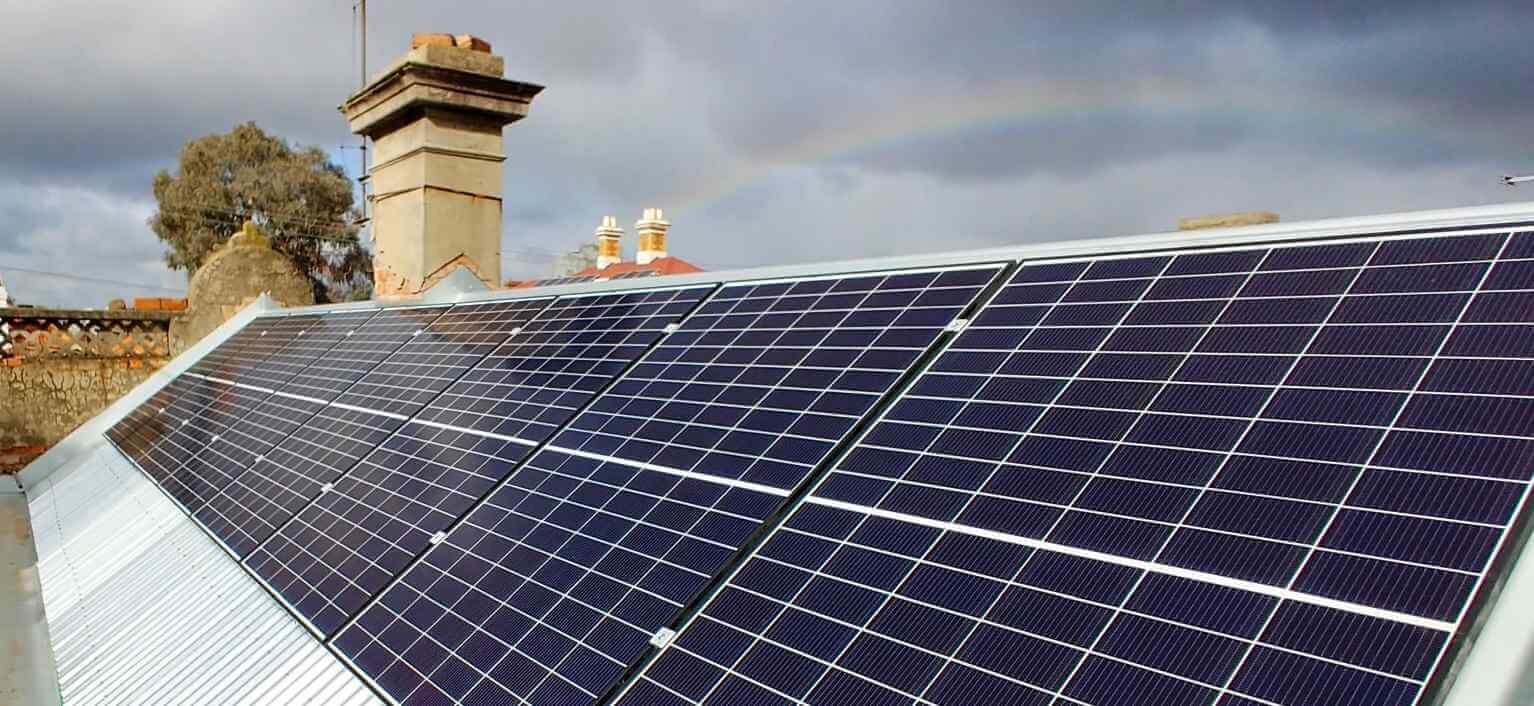

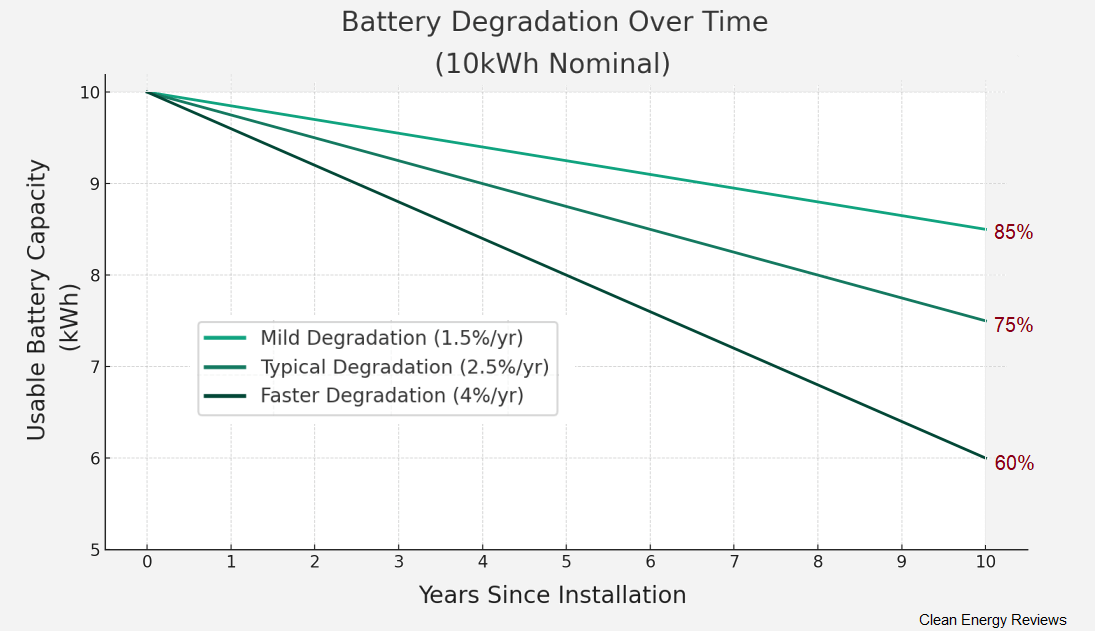
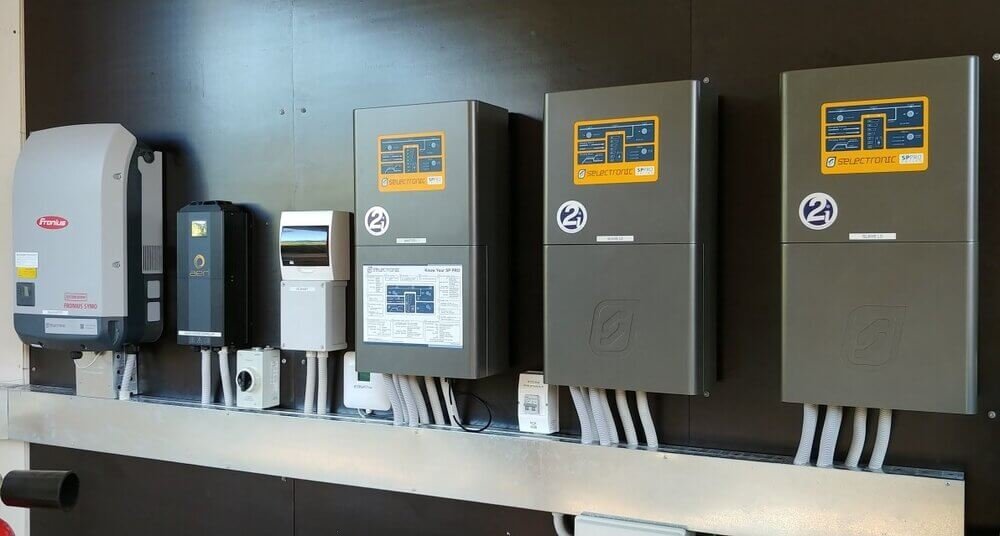
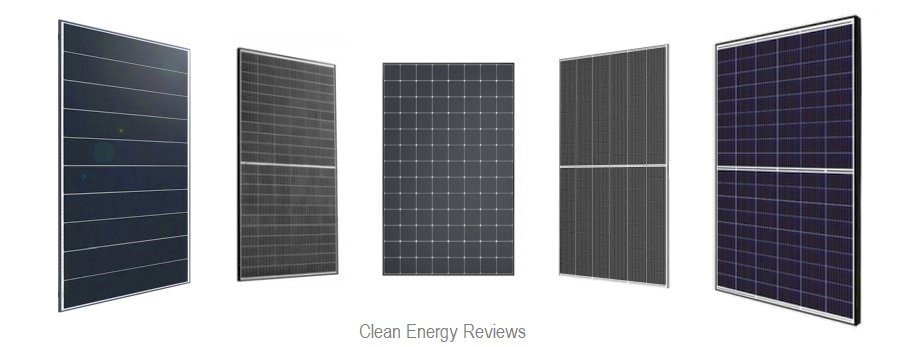

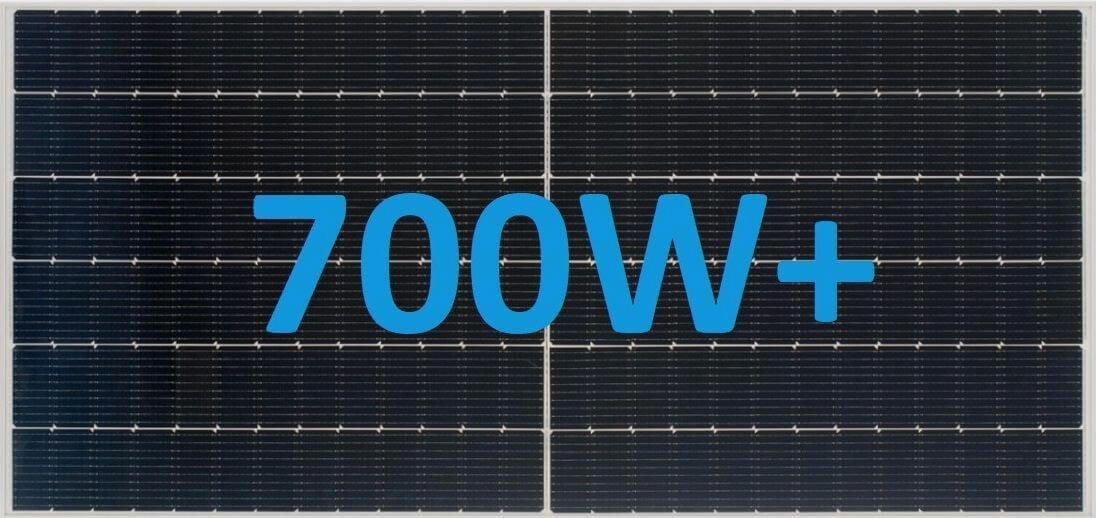

The comprehensive guide to solar battery and off-grid systems. How to select and size a home solar battery system and how much it may cost you. Also, alternatives to adding batteries and how energy efficiency can save you more than adding a battery.